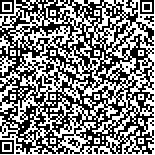|
| 引用本文: | 刘金立,陈新军,李 纲,王从军.西北太平洋柔鱼资源综合配置模型及管理策略探讨.海洋与湖沼,2014,45(5):1016-1022. |
| |
|
| |
|
|
| 本文已被:浏览 2414次 下载 2548次 |

码上扫一扫! |
|
|
| 西北太平洋柔鱼资源综合配置模型及管理策略探讨 |
|
刘金立,陈新军,李纲,王从军
|
|
上海海洋大学海洋科学学院,上海海洋大学海洋科学学院,上海海洋大学海洋科学学院,上海海洋大学海洋科学学院
|
|
| 摘要: |
| 柔鱼是我国远洋渔业重要的捕捞对象之一, 如何综合考虑生态效益、经济效益和社会效益来科学制定渔业管理目标是确保柔鱼资源可持续利用的重要研究内容。本研究以Gordon-Schaefer生物经济模型为理论基础, 利用1996—2008年我国鱿钓船在西北太平洋海域捕捞柔鱼的生产数据以及相关的经济数据, 以生态效益(最大持续产量, MSY)、经济效益(最大经济产量, MEY)和社会效益(生物经济平衡点, BE)作为西北太平洋柔鱼资源优化配置的基础数据, 考虑三个效益的不同权重建立了柔鱼资源综合配置模型, 模拟不同备选方案下柔鱼的短期(1—5年)、中期(10年)及长期(20年)的渔业资源状况、经济效益及其社会效益。结果表明, 西北太平洋柔鱼资源已处于充分利用状态, 但尚未遭受过度捕捞; 以方案8(MSY、MEY各占50%权重为管理目标)和方案2(MEY为管理目标)的中长期经济效益为最大, 且资源状况保持最好, 但社会效益较低; 以方案3(BE为管理目标)的当前及短期效益较大, 可以解决社会就业问题, 但长期经济效益为最低, 且资源状况最差; 综合考虑各方面因素, 最佳的备选方案为方案8和方案2, 即适宜捕捞努力量应控制在3.94万—4.19万船次, 可确保柔鱼资源量稳定在BMSY以上。 |
| 关键词: 柔鱼 社会生物经济模型 优化配置 鱿钓渔业 西北太平洋 |
| DOI:10.11693/hyhz20130800115 |
| 分类号:S937 |
| 基金项目:国家自然科学基金, 41276156 号; 国家高技术研究发展计划(863 项目), 2012AA092303 号; 国家发改委产业化专项,2159999 号; 上海市科技创新行动计划, 12231203900 号 |
| 附件 |
|
| MANAGEMENT STRATEGY AND COMPREHENSIVE ALLOCATION MODEL OF OMMASTREPHES BARTRAMIIIN THE NORTHWESTERN PACIFIC OCEAN |
|
Liu jin-li,Chen Xin-jun,Li Gang and Wang Cong-jun
|
|
College of Marine Sciences of Shanghai Ocean University,The Key Laboratory of Sustainable Exploitation of Oceanic Fisheries Resources,Ministry of Education,Shanghai Ocean University;College of Marine Sciences of Shanghai Ocean University,The Key Laboratory of Sustainable Exploitation of Oceanic Fisheries Resources,Ministry of Education,Shanghai Ocean University;College of Marine Sciences of Shanghai Ocean University,The Key Laboratory of Sustainable Exploitation of Oceanic Fisheries Resources,Ministry of Education,Shanghai Ocean University;College of Marine Sciences of Shanghai Ocean University
|
| Abstract: |
| Neon flying squid (Ommastrephes bartramii) in the Northwestern Pacific Ocean is one of the important commercial fishing targets for Chinese distant waters fisheries. How to determine the goal of fisheries management by considering the ecology, economy, and society is an important concern in the field of sustainable utilization of fishery. Based on the Gordon-Schaefer Bio-economic Model, we used the catch data and economic data from the squid fishery of China during 1996—2008 in the Northwestern Pacific Ocean to estimate the maximum sustainable yield, maximum economic yield, bio-economic equilibrium yield, and their corresponding fishing efforts. A social bio-economic model was established based on different weights of fishing efforts in ecology, economy, and society management objectives, and the resources status, economic benefits, and social benefits in 14 different management scenarios were simulated in short-(1—5 years), medium-(10 years), and long-term(20 years) of O. bartramii in the Northwestern Pacific Ocean. The results show that the fishery resource of O. bartramii was in full utilization, but not overfished. By simulation, if Scenarios 2 and 8 were used for management, the long-term economic benefits would be the maximum, the resource would be well sustained, but the social benefit would be low with less employment. If Scenario 3 were adopted, the short-term economic benefits would be the maximum for providing good chances of employment, but long-term economic benefit would be the lowest with the worst resources reusability. Therefore, Scenarios 8 and 2 should be the considered in which the suitable fishing effort should be controlled between 3.94 and 4.19 ten thousands fishing vessels by taking account of all impact factors and the biomass of O. bartramiibe kept above estimated maximum sustainable yield. |
| Key words: Ommastrephes bartramii social bio-economic model optimal utilization squid fishery northwestern Pacific Ocean |
|
|
|
|
|
